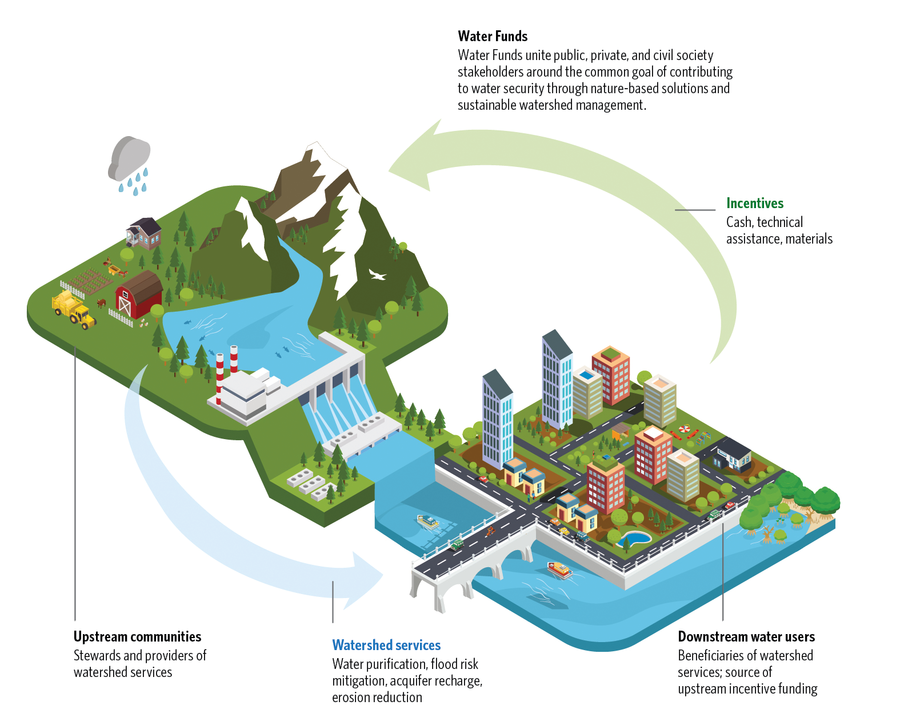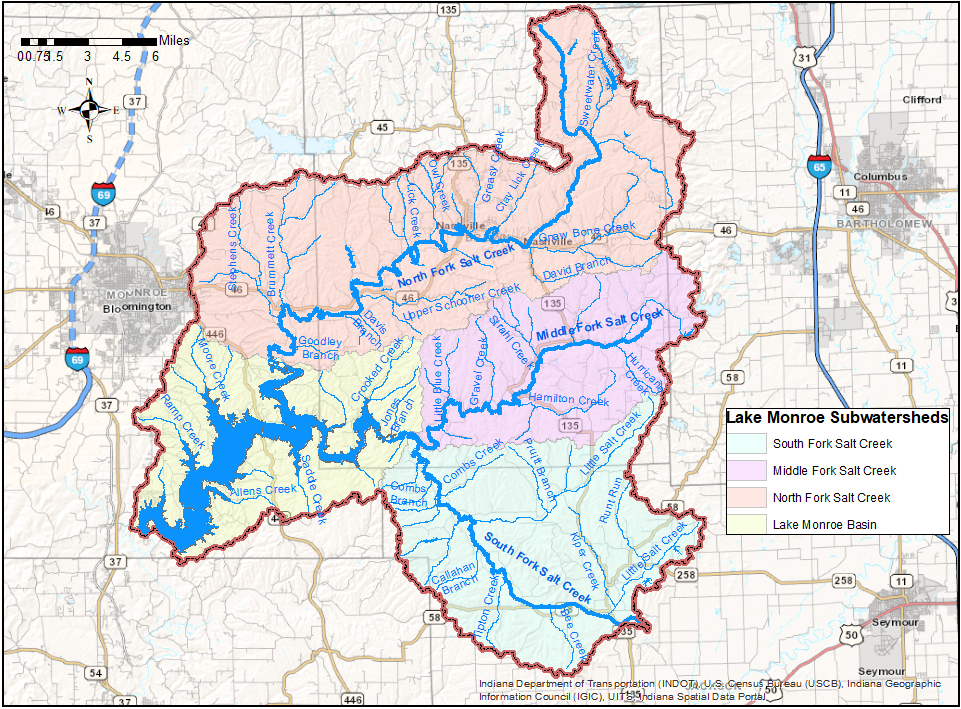A Water Fund is a way for downstream water users to invest in conservation activities upstream to protect and restore their watershed.
The goal of a Water Fund is to contribute to water security through nature-based solutions that serve the entire community.
Downstream water users—residents, businesses, utilities and local governments—invest money collectively in the water fund. These funds go to upstream farmers, landholders and communities to pay for conservation activities. Water users then benefit from improved water quality and quantity.

As the source of drinking water for the City of Bloomington, an important hub of local recreation and conservation, and a major part of our local economy, Lake Monroe Reservoir plays an important role in our community. As such, a strategic plan to ensure the maintenance and sustainability of our lake is essential to its future.
A Water Fund can help us maintain the quality of our water by bringing together the local community, collaborating on local governance and actively building funding that will maintain our water source for the long term.
The Nature Conservancy (TNC) has created dozens of Water Funds across the globe. Melissa Moran, Director of Community Programs for TNC, is on the Lake Monroe Water Fund Board and is collaborating with us to implement our Water Fund.

Examples of U.S based Water Funds
In San Antonio, TX, a publicly funded Water Fund was initiated in 2000 for the Edwards Aquifer. Known as the Edwards Aquifer Protection Program, the funds have helped protect more than 119,000 acres above the aquifer, including 21 percent of the aquifer’s recharge zone. San Antonians have voted three more times to continue the program.
The Upper South Platte Partnership in Denver, CO has formed to reduce threats to a clean and abundant water supply resulting from severe wildfire. The water utilities, US Forest Service, and TNC private and corporate donors including breweries and the American Forest Foundation are providing to the Water Fund partnership, with in-kind support from state, county, and city land management institutions.
To demonstrate how a Water Fund can enable investment in the Lake Monroe Watershed to protect and improve water quality, several partners in the community agreed to invest in a Water Fund Demonstration Project. This resulted in the installation of a stream gage to monitor the South Fork of Salt Creek at Kurtz, Indiana.
What Is A Watershed?
Watersheds are defined by natural and geophysical features of a land area, rather than governmental or political boundaries.

A watershed is an area that channels rainfall and snowmelt to the creeks, streams and rivers which end at a body of water – in this case, to Lake Monroe.
The Lake Monroe Watershed includes 5 counties: Monroe, Brown, Bartholomew, Lawrence and Jackson counties. Ninety-eight (98) percent of the 441 square mile watershed lies within three counties: Brown County (56%), Jackson County (21%), and Monroe County (21%).
The activities that take place within our watershed can have a direct impact on the water quality of Lake Monroe Reservoir – our drinking, fishing, swimming, boating and community water!
The Water Fund will invest in Land Use Interventions to help protect soil and water quality.
- Revegetation & Reforestation
- Agricultural & Livestock Best Management Practices for water quality
- Forestry Best Management Practices for water quality
- Wetland & Riparian Restoration & Creation
- Land Protection (e.g. conservation easements, acquisition)
- Road, Water/Wastewater & Infrastructure Management
- Education & Awareness Building
As the source of drinking water for the City of Bloomington, an important hub of local recreation and conservation, and a major part of our local economy, Lake Monroe plays an important role in our community. As such, a strategic approach to ensure funding for the maintenance and sustainability of our lake is essential to its future.
A Water Fund can help us maintain the quality of our water by bringing together the local community, working together on local governance and bringing together funding that will maintain our water source for the long term.
